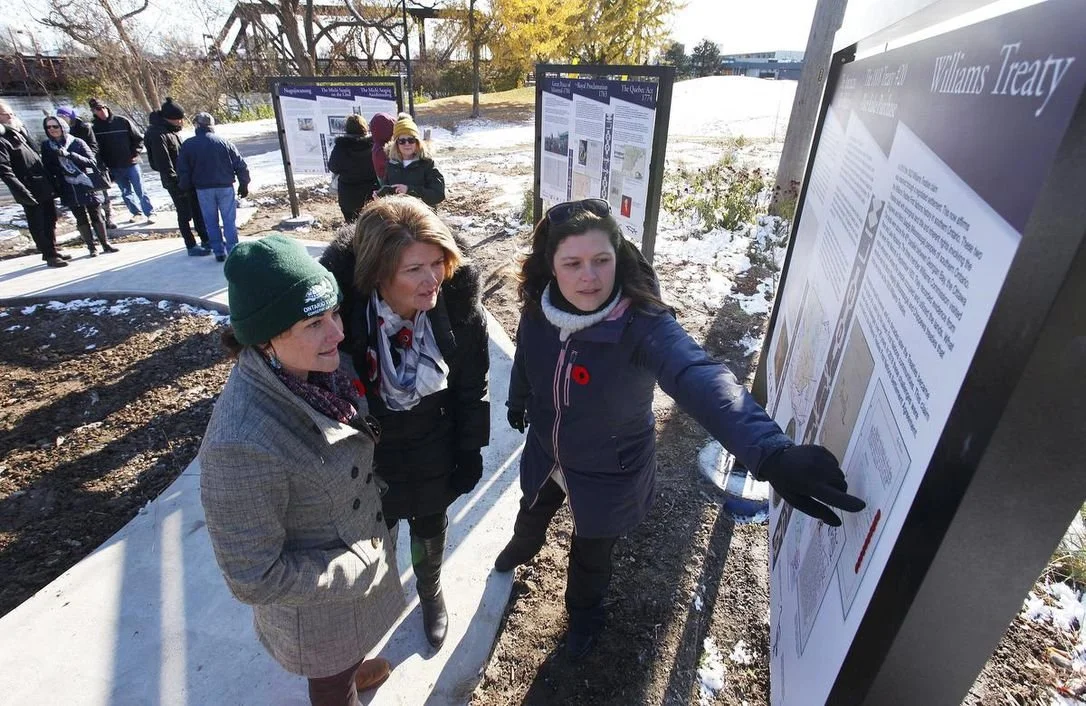Michael Belmore commissioned by Peterborough to create a public art installation called “The Gathering.”
Artist chosen for public artwork at The Nogojiwanong Project in Peterborough
Michael Belmore plans to use natural objects, elements in work set to debut this fall on the Otonabee River Trail.
By Vikram Nijhawan Examiner Reporter
Mon., July 19, 2021
update Article was updated Jul. 20, 2021
Ottawa-based artist Michael Belmore has been commissioned by the city to create a public art installation called “The Gathering.”
Set to debut later this fall, the artwork will be part of The Nogojiwanong Project at the south end of the Otonabee River Trail at Millennium Park in downtown Peterborough, commemorating the 200th anniversary of Rice Lake Treaty No. 20.
Belmore’s installation will incorporate natural objects and elements. Much like his previous works, will allow him to reflect upon his own identity as an Anishinaabe.
“Seemingly small things, simple things, inspire my work, the swing of a hammer, the warmth of a fire, the persistence of waves on a shore,” Belmore stated about this work.
“Through the insinuation of these actions, a much larger consequence is inferred. Materials such as water and stone have a voice, they speak a language and have a history of conversation that extends well beyond our fleeting human existence.
“I have attempted to enter into this exchange, offering my voice to speak about the past and the future, about our connection to this land and its ever-changing reality.”
Belmore received his undergraduate degree in sculpture and installation from the Ontario University of Art and Design in Toronto and his master of fine arts from the University of Ottawa.
The Nogojiwanong Project began as a series of interpretative panel installations in 2019, allowing visitors to learn more about the history of Indigenous peoples on the territory of what is now Peterborough and the Kawarthas.
“From a dilapidated (Nagojiwanong) sign in the park, it has been quite a transition to this new educational feature,” stated Tom Cowie of Hiawatha First Nation, about the original 2019 installation. “A wonderful partnership between the Michi Saagiig and the City of Peterborough.”
The city initiative’s name comes from the Anishinaabe word “Nogojiwanong,” meaning “a place at the foot of the rapids,” in reference to the Otonabee River and Peterborough’s original colonial settlement.
The 1818 Rice Lake Treaty No. 20, signed by six chiefs, allowed the British Crown to settle the region inhabited by the Michi Saagiig peoples, prompted by concerns over American presence in the territory during the War of 1812.
The region became Peterborough and Victoria counties along with northern Durham Region and southern parts of Haliburton County and Muskoka.
The discoveries of unmarked graves from former residential school sites across Canada this year have reignited the public conversation around truth and reconciliation.
On July 1, many Peterborough residents partook in protests to raise awareness for Indigenous rights in place of normal Canada Day celebrations, with the event No Pride in Genocide organized at Del Crary Park.
